FV 214 "Conqueror": The Last British Heavy Tank in History
The last British "heavyweight" remained in service with the British army until the 1966 year. At this point, he was finally ousted from the army by the new main battle tank, the Chieftain. The small number of heavy tanks built by the FV 214 Conqueror was also explained by the constant competition from the earlier and lighter tank Centurion, which was very well mastered by British industry and, as it turned out, had an excellent reserve for modernization.
The history of the project FV 214 "Conqueror"
After the A43 Black Prince tank project was closed in England, the British Army needed a new infantry escort tank. The role of such a combat vehicle identified the project tank A45 development company English Electric. The design weight of the combat vehicle was 56 tons, and the maximum speed was to be 30 km / h. The first prototype of the tank was planned to be built in the 1946 year, but after the end of the Second World War it was decided to abandon the concept of "cruising" and "infantry" tanks in the British army. Instead, they launched a program to create a "universal tank" under the designation of FV 200 and other combat vehicles at its base - self-propelled artillery installations (SAU) and armored personnel carriers.
Initially, the Centurion claimed the role of such a tank, but the British initially considered the resource of its modernization insufficient, which was especially important for the new tank that received the FV 41 index. This prototype was a Centurion grown in size with a more powerful gun, increased armoring and a modified chassis - the FV 201 tank had 201 road wheels on each side, instead of 8 from Centurion. The tank’s armament was supposed to be a 6-pounder (20-mm). In addition, a whole range of narrow specialization combat vehicles was projected on its chassis, and therefore the first prototype of the tank entered testing only in the 83,9 year.
Already in 1949, the British completely rethought the situation and decided that it was not practical to develop a large number of highly specialized projects, and therefore all projects under the FV 200 program, with the exception of BREM based on it, were closed. In addition, the 20-pound tank gun fits perfectly into the Centurion turret. At the same time, in connection with the appearance of a sufficiently large number of EC-3 heavy tanks in parts of the Soviet army, the question arose of the feasibility of continuing the FV 201 project - this British “heavyweight” was unable to resist his Soviet brethren. It was decided to redesign the project in accordance with the requirements for a heavy tank that would be able to withstand any Soviet tanks, primarily the EC-3, which made a big impression on former allies in World War II.
According to the new British project, a tower of a new design, in which a 201-mm gun was placed, was installed on the hull, which was borrowed from the FV 120, the new project was designated as FV 214. Due to the fact that a lot of time was already spent on this project, the tower was still to be developed, and the British industry was not mastered with the 120-mm gun, it was proposed to launch the intermediate version of the tank with the FV 201 tank and turret from the tank "Centurion". This version of the combat vehicle received a new designation FV221 "Caernarvon", in 1952, this tank was put to the test, but it was not accepted by the British Army. At the same time, the design of the FV 214 tank, which received the official designation “Conqueror”, continued to be amended. In this regard, the first heavy tanks Conqueror were able to leave the shop only in 1955 year.
Description of construction
The heavy tank FV 214 Conqueror was designed according to the classical layout scheme, the engine compartment was located at the rear of the hull. The gun was located in a tower rotating in 360 degrees, located in the central part of the hull. The turret of the tank was a single cast piece. The frontal surface of the tower was distinguished by a strong inclination of the armor, in addition to this, the tower was distinguished by a developed feeding niche. The armor of a heavy tank was monolithic, it was created from rolled armored plates (tank hull) and cast parts (tower tanks and turret). At the same time, even in frontal projection, the armor of the tank did not provide adequate protection against the cumulative missiles and shells that were widely distributed at that time.
The forehead of the tank turret had an 176 mm reservation, the gun mask was 200 mm, the turret's sideboard was 89 mm, and its feed was 51 mm. Along the sides of the tower were located on one six-barreled grenade launcher. The hull was armored weaker. The frontal armor of the hull was 130 mm, the armor plate was located at an angle of 60 degrees, thus the reduced thickness of the armor in the frontal projection of the FV 214 “Conqueror” tank was 260 mm. The sides of the tank, covered with 6-mm anti-cumulative screens, were only 51 mm, the hull stern was covered with armor of the same thickness.
The heart of the heavy tank was the Rolls-Royce Meteor M12 VN XX-cylinder carburetor engine, which developed the power of the HP 120. at 810 rpm. In addition to it, the power plant of the tank included an auxiliary engine, which developed the power of the 2800 HP. The auxiliary power plant provided with electricity numerous systems of the combat vehicle (outside the battle there was only one generator, which was driven by the main engine). The Meteor liquid cooling engine was equipped with a direct fuel injection system in the intake manifold and a supercharger. The capacity of the fuel tanks slightly exceeded 29 liters, this fuel reserve was enough for the passage of 1000 km. The maximum speed of the tank did not exceed 160 km / h.
Through a mechanically controlled main friction dry friction torque transmitted to the unsynchronized gearbox, which provided the 5 combat vehicle forward speeds and two reverse speeds. The gearbox was combined into a single unit with a pivot mechanism, which provided the combat vehicle with a fixed turning radius for each of the speeds (from 140 feet on the fifth to 16 feet in first gear, and also allowed to turn around one track on neutral gear).
The suspension of the Conqueror tank consisted of 8 carts (4 carts on each side) of interlocked pair-mounted rollers. Shock absorbers were not. As an elastic element of the suspension were used triple horizontally arranged twisted springs. The upper branch of the caterpillar relied on 4 supporting rollers. Rear wheel drive. The tracks of the tank are small, metal. Experts noted that both the transmission and the suspension of a heavy tank were a rather archaic solution. They demanded a great level of skill from the driver, and also needed careful maintenance, adding a lot of problems to the car, especially considering the weight of the heavy tank that exceeded 60 tons.
The crew of the heavy tank consisted of four people. The driver's seat was located on the right, in front of the tank hull. The commander of the combat vehicle was in the turret niche and controlled his own fire control turret (FCT - fire control turret), which was equipped with a stereoscopic rangefinder with a 124,4 centimeter base, as well as a remote-controlled 7,62-mm machine gun. This turret possessed turn-independent control. The automatics made it possible to keep the turret pointing at the chosen target even in the case of tower rotation (in other words, the fire control turret rotated in the opposite direction with the same speed as the tank turret). The charger was located on the left side of the tank gun, while the gunner's place was on the right side of the gun. Each member of the crew of the tank had its own hatch for entering / exiting the combat vehicle. All hatches had a similar principle: the lid is moved to the side after it is raised above its seat.
The main armament of the "Conqueror" was a rifled 120-mm gun L1. The gun was stabilized in a vertical plane, but the shooting was carried out from a stop. Only high-explosive armor-piercing and armor-piercing sub-caliber projectiles with plastic explosive were included in the ammunition of this weapon; there were only 35 shots of separate loading in the tank. The 7,62-mm machine gun and the remote-controlled anti-aircraft machine gun of the same caliber, which was mounted on the commander's turret on the left side of the tank commander's hatch, played the role of auxiliary armament. Ammunition of two machine guns consisted of 7500 cartridges.
In order to prevent strong gas pollution of the tank's habitable space, the L1 cannon was specially equipped with an ejector, and a rather complicated cartridge case removal mechanism was placed in the tank turret. The hatch of this mechanism was located immediately behind the gunner’s workplace. However, in practice, his frequent refusals forced the commander of a combat vehicle to independently throw out the liner from the tank. Either the loader was forced to open his hatch and dispose of the cartridge cases after each shot from the gun.
Since the main task of the "Conqueror" was the fight against enemy tanks at long distances (primarily with its heavy machines), the designers needed to ensure a high probability of hitting the target with the very first shot. To solve this problem (in the absence of high-speed and sufficiently compact ballistic solvers at that time), the British created a system, the description of which is best shown by the example of the tank crew’s actions to hit the detected target.
Finding the enemy's tank in the periscope sight, the commander of the heavy tank Conqueror turned the turret and tilted the sight mirror to the center of the field of view. In the left eyepiece at the same time displayed the range scale, which was combined with the gunner's sight. Having determined the distance to the target using a stereoscopic rangefinder, the tank commander introduced the appropriate correction on the scales of his own sight and gunner's sight (with the help of an electric installer). After that, by pressing the button on the control handle of the turret, he forced the tank turret to turn in the direction of the detected target, combining the line of sight of his own sight and the gunner's sight (the turret could rotate in the opposite direction relative to the tower without losing sight of the target). If all actions were done correctly, the target appeared in the field of view of the gunner's sight, and the gun already had the desired angle of elevation.
In principle, the tank commander himself was then able to make a shot from the gun, but the gunner had an additional device to take into account the roll angle of the tank (he was a ball in a curved transparent tube, with corrections of aiming applied to it) commander of a combat vehicle. Therefore, the gunner took control on himself, making the final amendments, and making a shot from the gun. The commander monitored the result of the shooting and either proceeded to search for new targets, or gave the command to re-shoot, making the necessary amendments to the observed place of the first hit. If the heavy tank was moving at a speed of more than 2,5 km / h, the weapon stabilization system automatically began to operate, but this caused difficulties for the gunner at those moments when the combat vehicle almost stopped, or only started its movement.
The narrowness of the specialization of the heavy tank and significant technical problems, along with low overall reliability, had a negative effect on its fate. After developing in the UK a great 105-mm L7 cannon designed for the Centurion tank, the lot of exploitation and the huge Conqueror tank were sealed. In 1966, the last tank of this type was decommissioned. Ironically, many FV214 heavy tanks found their last refuge in the landfills, which were used as targets for the Centurion tanks, which they had to replace themselves in military service.
Modifications of the tank:
Conqueror Mk.I - the first serial modification, all were collected 20 tanks.
The Conqueror Mk.II is the main serial modification of the 1958 of the year, which was distinguished by the installation of an improved mechanism for lifting the cannon, the mechanism for turning the turret and some new instruments of the fire control system. A total of 165 tanks of this modification were manufactured.
Machines based on the heavy tank Conqueror:
FV222 Mk.I and FV222 Mk.II - BREM, were released in small quantities - 8 and 20 units, respectively.
Until today, the expositions of the tank museums have preserved the 5 of the British heavy tanks Conqueror, as well as three BREM FV 222, built on their base. One of these heavy tanks is also on display in the Russian Armored Museum in Kubinka. This tank was received under the inter-museum exchange program.
Performance characteristics of the FV 214 "Conqueror":
Overall dimensions: body length - 7730 mm (with a forward gun - 11 600 mm), body width - 3990 mm, height - 3350 mm.
Combat weight - 64 tons.
The power plant is a V-shaped 12-cylinder carburetor engine Rolls-Royce Meteor M120, hp power 810.
Maximum speed - 35 km / h.
Power reserve - 161 km.
Armament - 120-mm gun L1 and two 7,62-mm machine guns.
Ammunition - 35 shots and 7500 cartridges.
Crew - 4 person.
Information sources:
http://rufor.org/showthread.php?t=2457
http://warspot.ru/3934-nesostoyavshiysya-zavoevatel
http://armyman.info/bronetehnika/tanki/10351-tyazhelyy-tank-fv214-conqueror.html
Open source materials
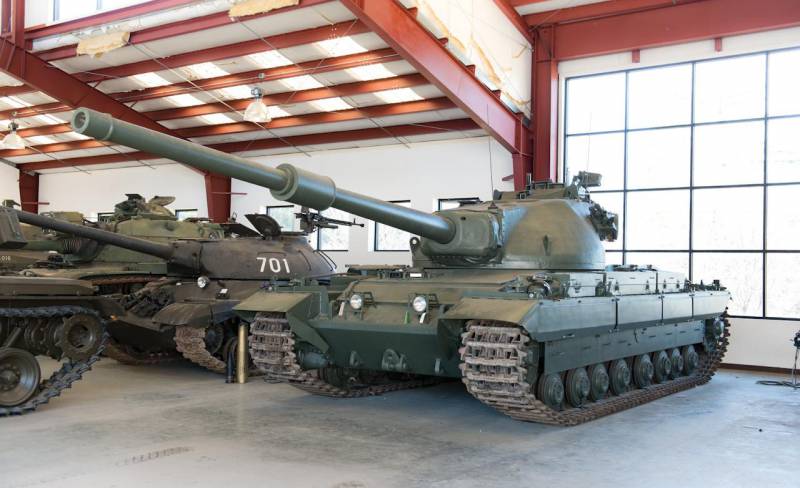
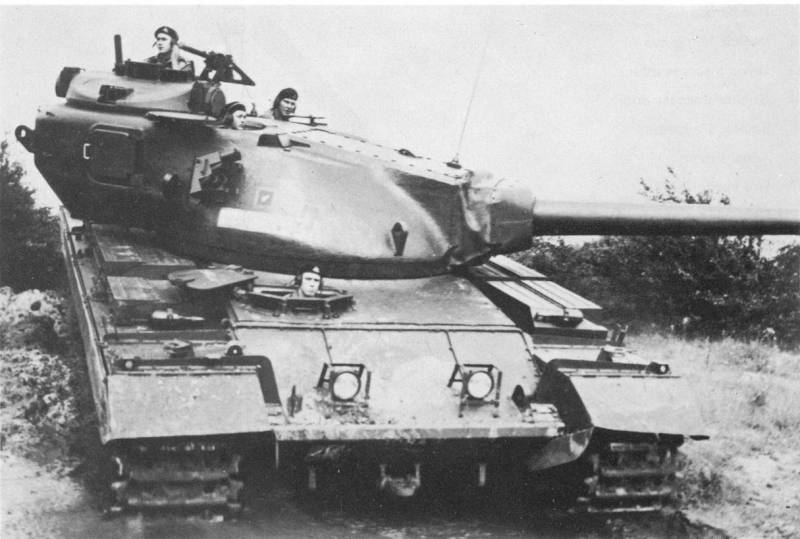
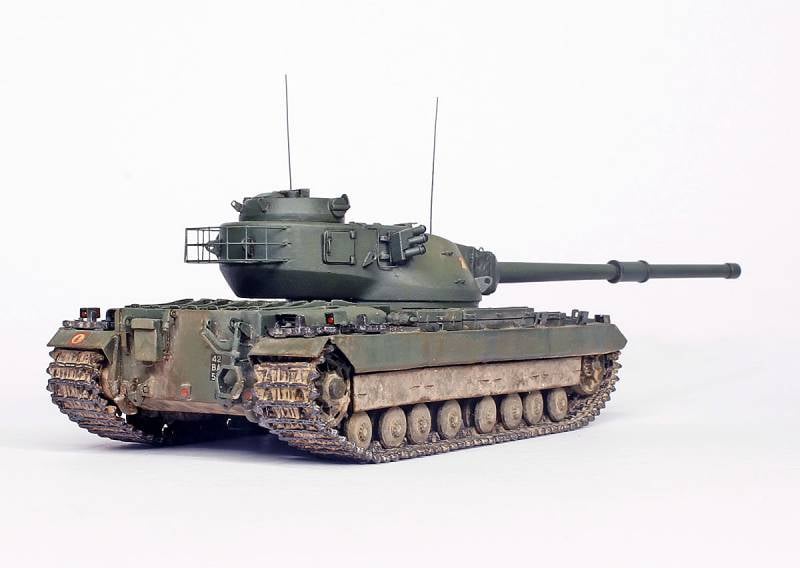
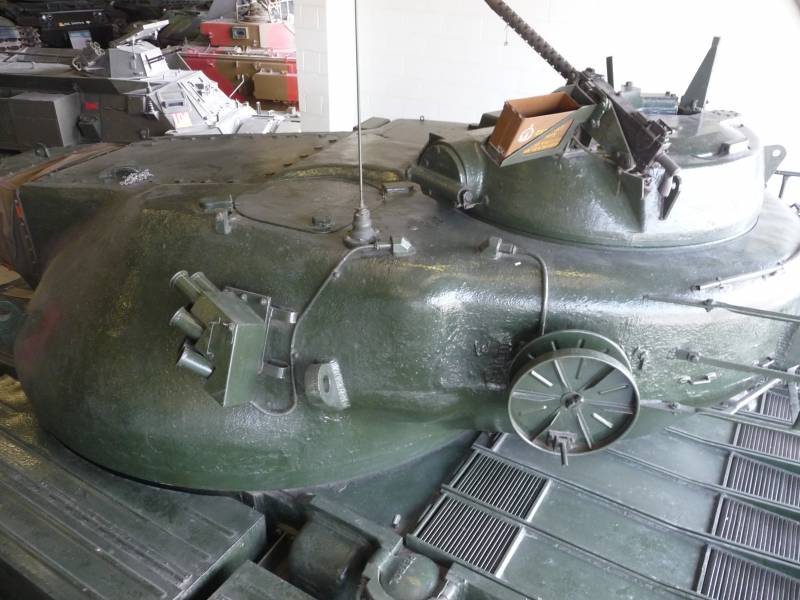
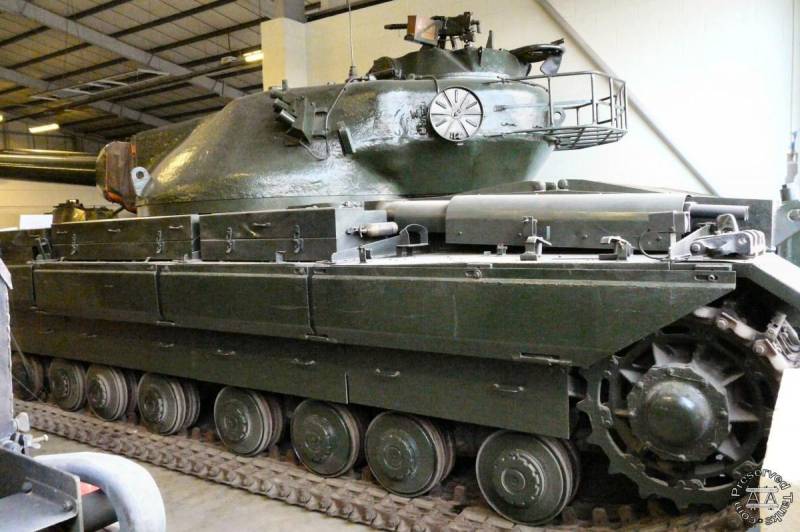
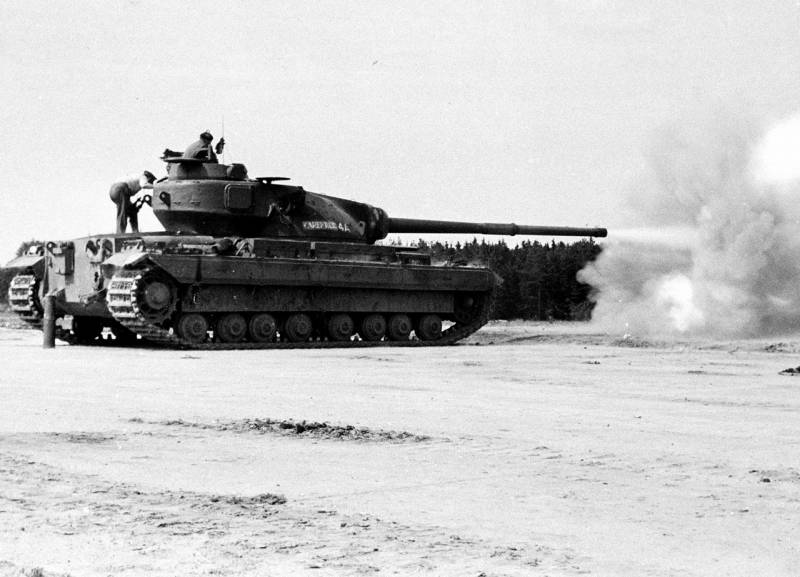
Information